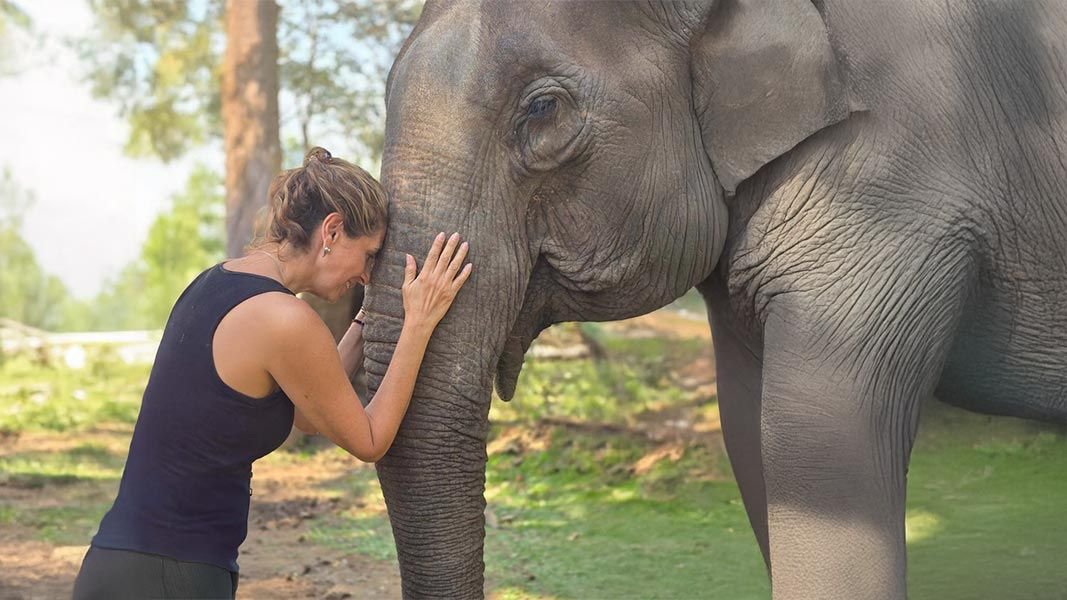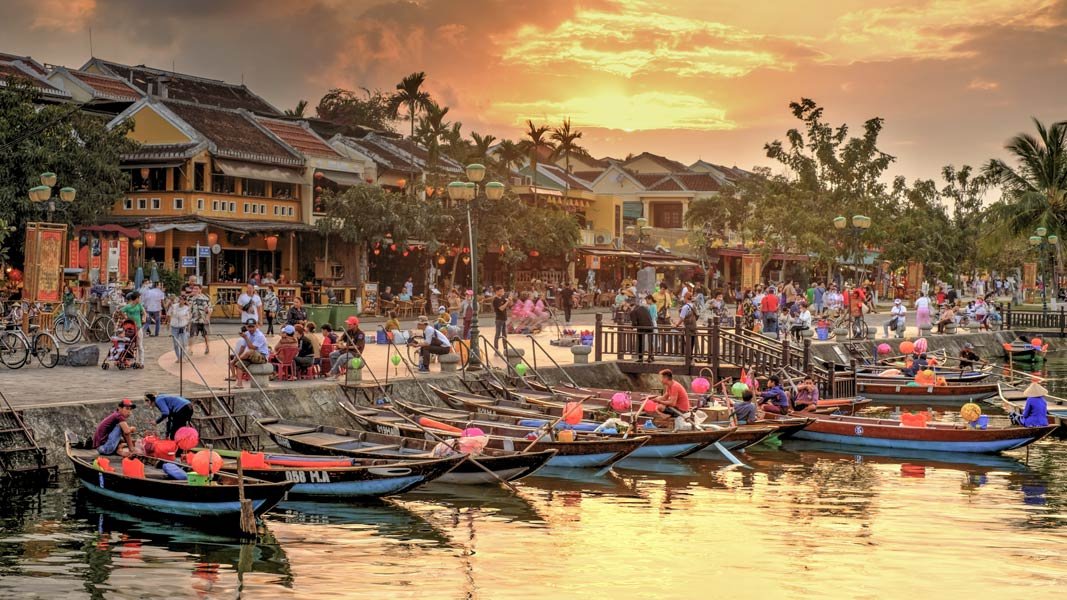Overview
Laos, known as the “Land of a Million Elephants,” is celebrated for its stunning landscapes and rich cultural heritage. This landlocked nation, nestled between Vietnam, Thailand, and Cambodia, has preserved its traditions and natural beauty, making it a hidden gem in Southeast Asia. With a resilient history and its status as a communist nation, Laos offers a unique cultural experience untouched by external influences.
Travelers will find diverse experiences in Laos, from the tranquil streets of Luang Prabang to the natural wonders of the Bolaven Plateau. Luang Prabang, a UNESCO World Heritage city, features well-preserved architecture, serene temples, and the beautiful Kuang Si Falls. Vang Vieng attracts adventure seekers with its limestone karsts and activities like kayaking and caving along the Nam Song River. Vientiane, the capital, offers a mix of French colonial architecture, vibrant markets, and the important Pha That Luang stupa.
The Plain of Jars captivates with its mysterious stone jars believed to be ancient funerary urns. The Bolaven Plateau, known for its cooler climate and coffee plantations, provides a peaceful escape from the heat. Laos invites travelers to immerse themselves in its unique charm and savor the warm hospitality of its people.
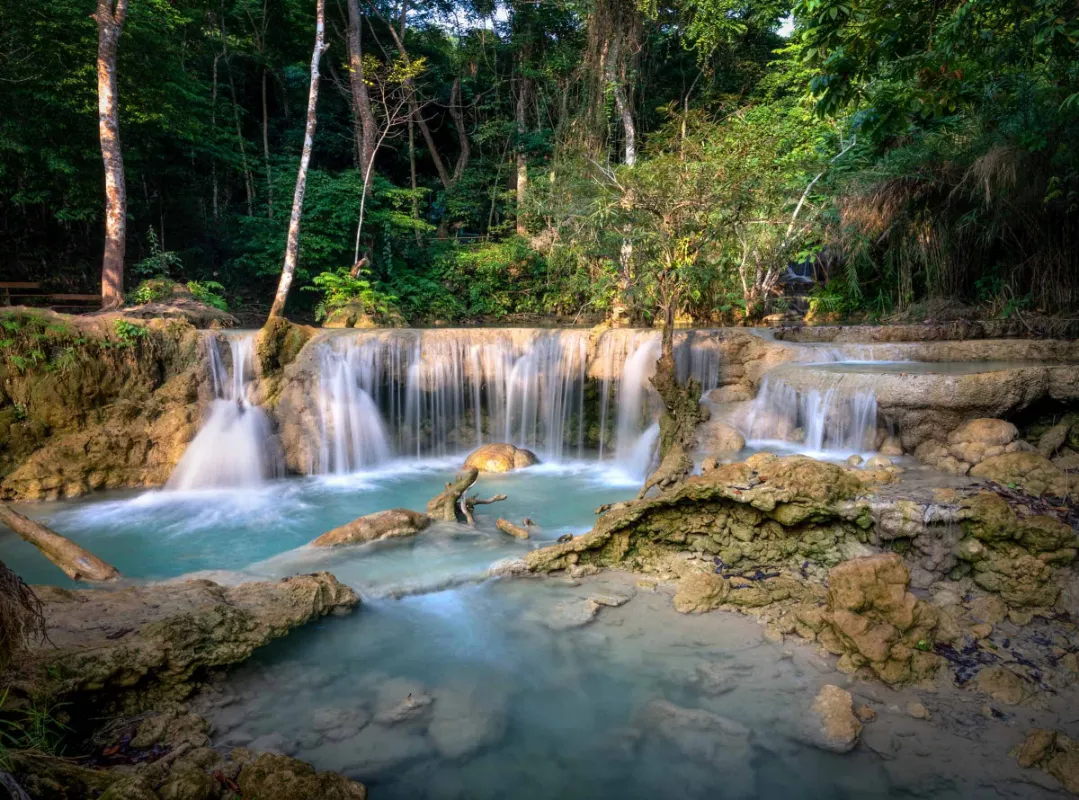
Country
Laos
Visa Requirements
Visa requirements for Laos vary depending on your nationality and the purpose of your visit. Many countries are eligible for visa on arrival, while others may require a visa in advance. It's recommended to check the specific requirements before planning your trip.
Languages spoken
The official language of Laos is Lao. While Lao is the primary language, you'll find that English is spoken and understood, especially in tourist areas and larger cities. French is also used in some administrative and commercial contexts.
Currency used
The official currency of Laos is the Lao Kip (LAK). While the Lao Kip is the local currency, Thai Baht and US Dollars are widely accepted in tourist areas, and it's advisable to carry a mix of currencies for convenience.
Area (km2)
Laos covers an area of approximately 236,800 square kilometers, making it a relatively compact country in Southeast Asia.
Map
Travel Tips
- Slow Travel Approach: Laos is known for its laid-back pace. While transportation can be slow, consider embracing this as part of the experience. Enjoy the scenery and interactions with locals during your journeys. The recent introduction of the high-speed train offers a faster option for traveling between major cities, enhancing your travel flexibility.
- Try Local Cooking Classes: The vibrant Laotian cuisine is a must-try, with its fresh herbs and unique flavors. Enroll in a local cooking class to learn how to prepare traditional dishes like Larb (spicy minced meat salad) and Sticky Rice. This hands-on experience not only teaches you about the ingredients but also provides insights into the culture and traditions surrounding Laotian food.
- Shop Local Products: When shopping for souvenirs, look for handmade crafts such as silk scarves, intricate textiles, and bamboo products. These items support local artisans and help preserve traditional skills. Additionally, consider buying local coffee from the Bolaven Plateau, known for its rich flavor and sustainable farming practices.
- Be Prepared for Weather Variations: Depending on the season, Laos can be quite hot and humid or cooler in higher altitudes. Dress in lightweight, breathable fabrics, and bring a light jacket if you plan to visit the mountainous areas.
- Utilize Public Transportation: In addition to tuk-tuks and songthaews, consider using the local bus services for longer distances. It’s a budget-friendly option and a great way to experience everyday life in Laos.
- Respect Local Etiquette: In Laos, greeting with a "nop" (a traditional bow with hands together) is a common practice. Be sure to observe local customs, such as not touching someone’s head and dressing modestly, especially in religious sites.
- Plan for Limited Internet Connectivity: While major cities may have reliable Wi-Fi, rural areas often lack internet access. Download maps and necessary information ahead of time to avoid any inconveniences.
- Engage with Community Projects: Look for opportunities to participate in community development initiatives, such as eco-tourism or conservation projects. This not only enriches your travel experience but also contributes positively to local communities.
- Support local handicrafts: Instead of buying mass-produced souvenirs, seek out locally made handicrafts, especially from ethnic minority groups like the Hmong or Lao artisans. This helps preserve traditional skills and supports local economies.
- Respect the quiet pace of life: Laos is often more laid-back compared to the bustling tourist areas of Thailand. Be mindful of local customs, such as the importance of silence and patience, especially in religious and rural settings.
- Participate in authentic eco-tourism: Laos offers more untouched nature experiences compared to Thailand’s over-commercialized tours. Choose eco-friendly treks or village homestays that promote sustainable tourism and support local conservation efforts.
- Observe alms-giving respectfully: In cities like Luang Prabang, the alms-giving ceremony is a sacred ritual. Unlike Thailand’s more touristy experiences, be sure to participate quietly, avoid disrupting the monks, and dress modestly.
- Minimize plastic waste: Laos struggles with waste management in rural areas. Bring your own reusable water bottles, bags, and containers to reduce plastic usage, which can have a lasting negative impact on the environment in remote locations.
Highlights
- Luang Prabang: This charming city, a UNESCO World Heritage site, is a blend of ancient temples and colonial architecture. The iconic alms-giving ceremony at dawn and the tranquil atmosphere of the Mekong River make it a must-visit. Don’t miss the stunning Kuang Si Falls, where turquoise waters cascade into pools, perfect for a refreshing dip.
- Vang Vieng: Known for its breathtaking scenery, Vang Vieng is surrounded by dramatic limestone mountains and the Nam Song River. It's a playground for thrill-seekers, offering activities such as tubing, kayaking, and caving. The town’s vibrant nightlife and relaxed vibe create a unique blend of adventure and leisure.
- Vientiane: As the capital, Vientiane offers a fascinating mix of traditional and French colonial influences. Explore the stunning Pha That Luang, a national symbol, and take a stroll along the Mekong River promenade for beautiful sunset views. The city’s laid-back atmosphere contrasts with other Southeast Asian capitals, inviting you to enjoy its rich culture and cuisine.
- Plain of Jars: This enigmatic site captivates visitors with its large stone jars, believed to be remnants of an ancient civilization. The jars are scattered across the landscape, offering a glimpse into Laos's mysterious past. Engaging with local guides can provide insights into the folklore and history surrounding this unique archaeological treasure.
- Bolaven Plateau: Renowned for its cooler temperatures and lush landscapes, the Bolaven Plateau is an oasis of tranquility. Coffee lovers will appreciate the thriving plantations here, while nature enthusiasts can explore stunning waterfalls like Tad Fane and Tad Yuang. The region’s peaceful ambiance is perfect for relaxing and immersing yourself in nature.
Responsible Travel Practices
- Support local handicrafts: Instead of buying mass-produced souvenirs, seek out locally made handicrafts, especially from ethnic minority groups like the Hmong or Lao artisans. This helps preserve traditional skills and supports local economies.
- Respect the quiet pace of life: Laos is often more laid-back compared to the bustling tourist areas of Thailand. Be mindful of local customs, such as the importance of silence and patience, especially in religious and rural settings.
- Participate in authentic eco-tourism: Laos offers more untouched nature experiences compared to Thailand’s over-commercialized tours. Choose eco-friendly treks or village homestays that promote sustainable tourism and support local conservation efforts.
- Observe alms-giving respectfully: In cities like Luang Prabang, the alms-giving ceremony is a sacred ritual. Unlike Thailand’s more touristy experiences, be sure to participate quietly, avoid disrupting the monks, and dress modestly.
- Minimize plastic waste: Laos struggles with waste management in rural areas. Bring your own reusable water bottles, bags, and containers to reduce plastic usage, which can have a lasting negative impact on the environment in remote locations.
Local Cuisine

Laap
A traditional Lao salad made with minced meat, fresh herbs, lime juice, and toasted rice. It's a flavorful and aromatic dish that represents Laos' culture!
Laap is a

Sticky Rice
Sticky rice is a staple in Laos, valued for its unique texture and versatility. It serves as the perfect accompaniment to a variety of local dishes.
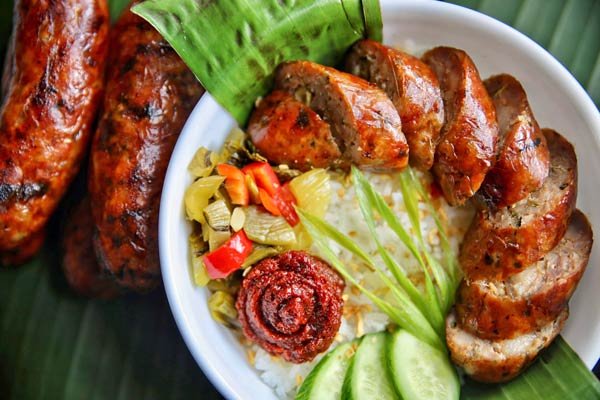
Mok Pa
Mok Pa features marinated fish with fresh herbs, wrapped in banana leaves and steamed. This delicious dish highlights the authentic flavors of Laos.

Tam Mak Houng
Tam Mak Houng is a refreshing green papaya salad with chilies, garlic, and dried fish, offering a vibrant and spicy flavor characteristic of Lao cuisine.
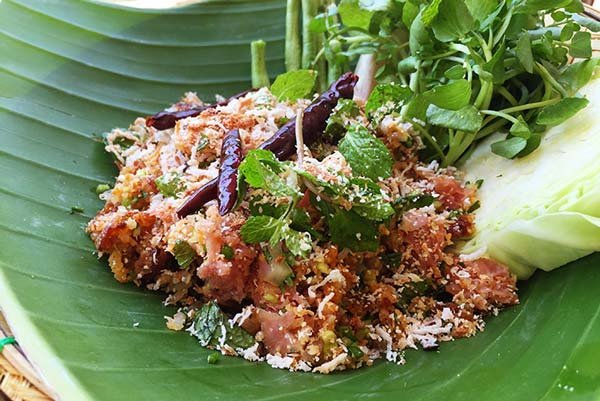
Nam Khao combines crispy fried rice with meat, fresh herbs, and nuts. This dish offers a delightful mix of flavors and textures, ideal for sharing on any occasion.
You may like
Discover the Most Suitable Trip for You!


